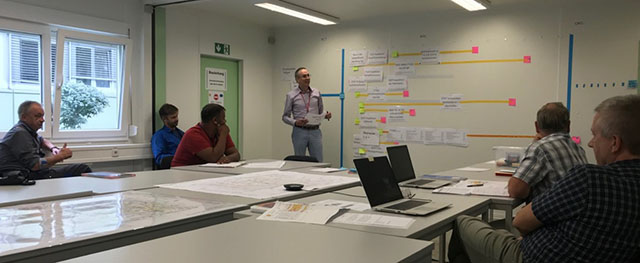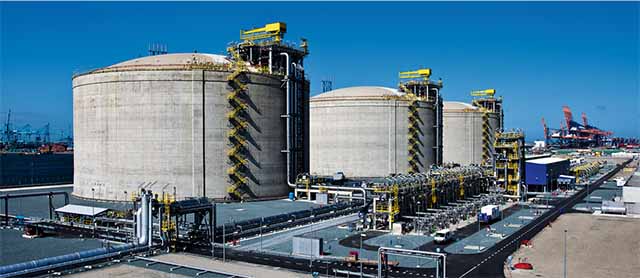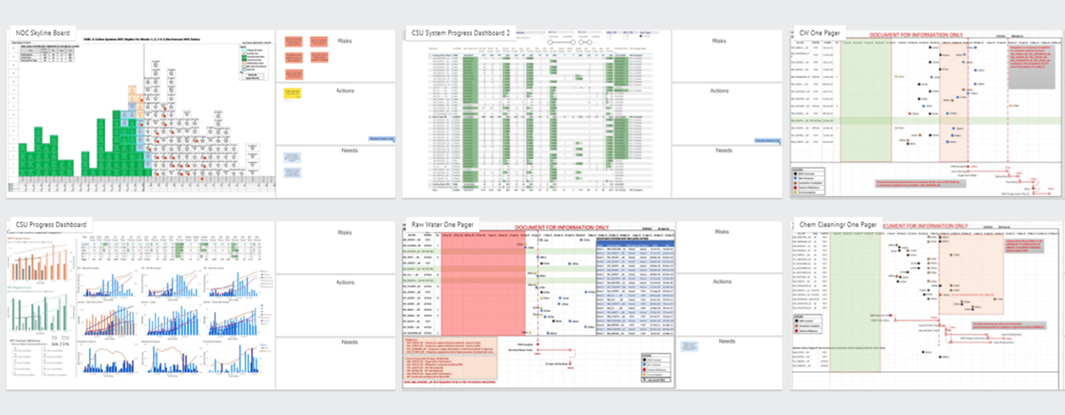This is an update to an earlier story, but given how fast things are changing in remote working and the technology we are using to enable virtual teams to accomplish what they formerly did in person, we thought it valuable to write this update.
We're now in 2021, and despite what many hoped would be an abbreviated time away from work, here we are, working from our bedrooms, kitchens and basements. And conversations that used to be about getting connected and holding virtual meetings through Zoom, Teams and other systems, are turning to how do we do remotely what we used to do in person?
I'd like to shine the light on some of our work with major multinationals in their project planning for shutdowns, turnarounds and capital projects. My hope is that you can see how this fits your organization, but more that it opens up conversations among your team to more ambitious goals.
Here are six examples of where we have introduced new technology in our work, and in turn helped our clients achieve greater goals and effectiveness among their remote or hybrid teams - often spanning wide distances and multiple time zones, but still achieving incredible results in stronger plans, aligned teams and engaged team members.

Our traditional in-person schedule optimization session, here shown physically distanced with enlarged visuals. This setting now includes both in-person and remote participants, calling in and sharing screens. This is low-tech, but it is still important to get right in terms of facilitation.
Case Example 1: A Major Refinery in Southeast Asia
Facing a major column overhaul during the upcoming 2021 turnaround and with most of the planning team working remotely, this TAR planning team was concerned. Our team brought a remote facilitation to conduct schedule quality reviews.
Scheduling data came from their Primavera system and was presented in a visual manner using iObeya. With participants on several continents, they reviewed the job steps for accuracy, sequencing, duration, and use of important shared resources.
In a single session the team identified 131 actions, 26 risks and 20 opportunities with a preliminary savings of 28 hours over the first 5 days of the schedule (this was a 23% reduction). The client estimates $1.3 million in savings will result from this work, plus a much-improved risk profile from greater awareness and mitigating actions.
This would have formerly been a fly-in exercise, with specialists from North America making the trip to join the on-site team.
Case Example 2: A North American Petrochemical Plant TAR
In 27 turnaround planning virtual optimization sessions spanning 7 months, RLG and client teams numbering 8-16 people, reviewed 71 systems, 1,341 activities and 1,708 equipment tags. This captured nearly 960 opportunities and reduced critical path by more than 142 days of combined duration. This work is still in progress but work thus far represents turnaround savings of at least $8.2 million.
In each session, the site team, contractors, and RLG performance coaches work to take data from multiple sources, including their Primavera P6 scheduling system, and upload it into the iObeya virtual whiteboard. These create a visual representation of the work, sequenced, sized and coloured to correspond to the work phase and craft group. Participants readily study each step, move and edit it's properties visually, all the while capturing actions, risks and opportunities. Data is then extracted and made available to the schedulers for upload back to Primavera.
Case Example 3: A European LNG Facility
RLG coaches in a hybrid virtual support plus on-site engagement, are collaborating with the turnaround team at this LNG facility through virtual workshops focused on schedule optimization and have completed eight sessions. This is the first time the client has used virtual space for schedule optimization and results so far have been better than predicted. We again chose iObeya for this application and we dedicated space in our platform for both RLG and client team members, enabling high security and privacy, but with 24/7 accessibility. The client team is highly supportive and looking forward to upcoming sessions, which will engage primary contractors. Starting with a 12-day mechanical work window we have removed 3.5 days, identified 54 actions, and have uncovered 26 risks. This client estimates the impact of this work to be around €5 million in savings.

Case Example 4: A South African Refinery
We worked with this refinery through 2019-2020 until Covid-19 forced us offsite and forced this client to suspend much of their operational improvement and TAR planning activity. We engaged with them for a month to help them undertake a massive, multi-day virtual facilitation where they scrutinized and selected the scope for a major turnaround. This session brought participants online at all hours of the day and night from Europe and North America, and led them through each line of scope and a prescriptive scope selection process. In the end, over 1200 line items were successfully reviewed, with much positive feedback from the team. Technology included Excel, Teams, iObeya, Menti, and many coffee makers.
Historically, this would have included travel, but it also would have excluded several remote SME participants who added considerable value by being visually and virtually connected.
Case Example 5: A North American Mega Construction Project
At one of the largest construction projects underway in North America today, our client was transitioning from construction phase to Commissioning and Start Up (CSU). Historically they would have had on-site war rooms (AKA project, or mission, control rooms). In today's remote working environment, they needed a different solution.
RLG was asked to help identify and implement a virtual platform for the interactive collaboration of their Completions and Commissioning teams. We evaluated five alternatives and with their IT and CSU teams, and selected iObeya.
Design, development and rollout of several iterations through an improvement cycle took a couple of months, but the results were excellent. The core team:
- established room design principles
- set up iObeya as a platform on local systems
- developed content and helped stakeholders own their areas
- trained on use, access and helped new users
Every new meeting requires roles, responsibilities, and effective facilitation and buy-in by the participants. With this VMCR, RLG coaches established these with the local team through a Terms of Reference (ToR) guide and one-on-one and team coaching.
The Virtual Mission Control Room is world class only through the effort by this team to:
- own the program
- establish a ToR that fit their unique needs
- dedicate quality time to iObeya Design Principles
- make it look and work well using an iterative approach
- push through discomfort to find what works for them

CSU Virtual Mission Control Room captures the critical System Delivery Skyline, Quantity Curves and Glance-back Performance Review
Case Example 6: A North American Petrochemical Plant
A few months ago, we had an opportunity to support one of our ongoing clients when they experienced a critical equipment failure resulting in an unplanned shutdown of their ethylene furnaces. In quick order, a virtual “war room” was created to provide coaching, facilitation, and support, whereby all stakeholders shared furnace status, repair and replace progress, operation constraints, plans, and actions.
The virtual war room approach helped pull together a complex team and remote working situation to a productive result:
- Plant personnel needed to work together to repair and light 10 of 14 furnaces to resume ethylene production as safely and quickly as possible.
- COVID-19 had 80% of the workforce furloughed or working from home.
- Extent of the damage to each furnace was not fully understood and new information was emerging daily.
- Contractor support and critical spares were limited.
- Communication and problem understanding were interrupted by their inability to meet up as normal in their plant offices.
- The virtual war-room enabled frequent “huddles” among key stakeholders to ensure alignment to progress, plans, and mutual support.
Over a period of 14 days, the virtual “war room” was constantly updated, providing status on the progression of backlog through the maintenance process. Watch a short clip of the process here:
I thought it would take us a minimum of 4 weeks to get product to the pipeline given the circumstances and our history of unplanned events. We did it in just over 2 weeks!
Senior Superintendent
From home I must have visited that ‘room’ 12 times a day and kept a tab open on my browser to stay current with all the changes that were happening. I’ve never felt so informed and prepared when reporting up to my bosses.
Plant Director
Today, we are starting two new engagements, with a mega-project in commissioning phase, and in a forest products OSB facility, where this remote working approach will again be deployed.
We are ready to help you with your challenges in Industry 4.0, Lean Enterprise and Digital Workplace. For more information, please contact us and we would be happy to talk through your unique challenge and share examples what we have done with others.